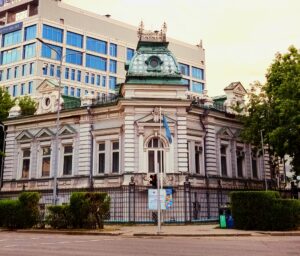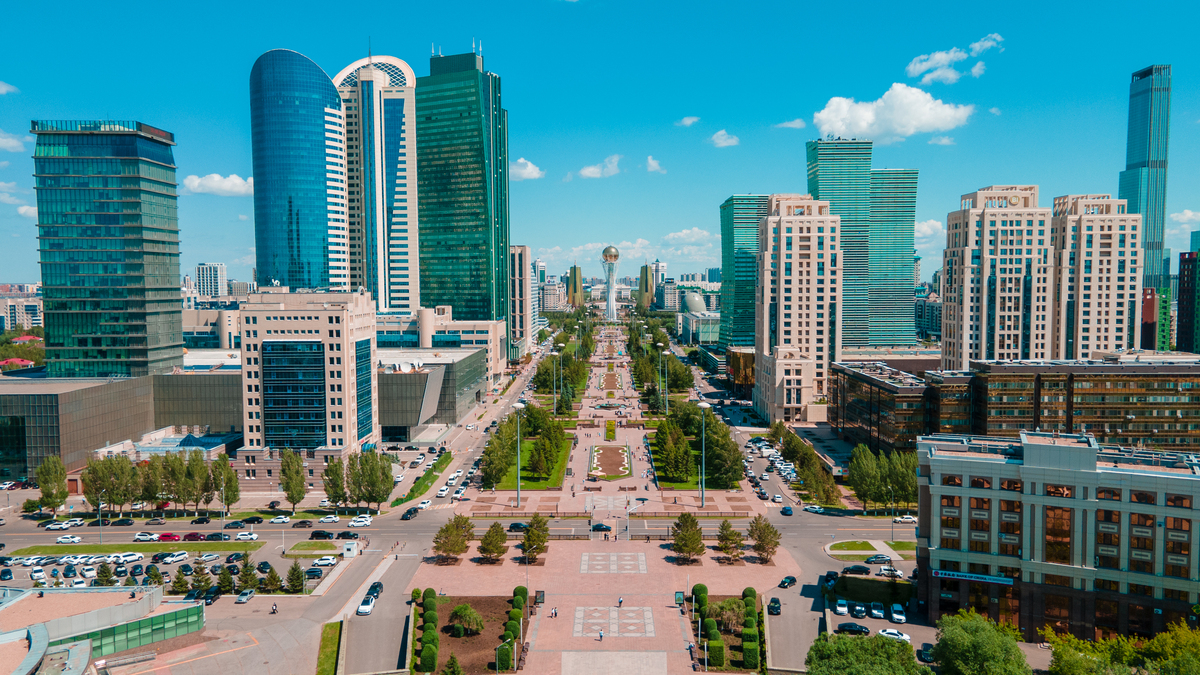ASTANA: This year, the Kazakh capital celebrates its 26th anniversary on July 6. This day holds deep historical and cultural significance, symbolizing the country’s achievements.
On July 6, 1994, the Supreme Council of Kazakhstan passed a resolution to relocate the capital from Almaty to Akmola. The central government completed its move to Akmola in 1997, followed by a pivotal decision in 1998 when the city was renamed Astana by presidential decree, meaning “capital” in Kazakh.
Astana was honored with the title – the City of Peace by the United Nations Educational, Scientific and Cultural Organization (UNESCO) in 1999, recognizing its excellence in social and environmental development, municipal sectors, and efforts towards a culture of peace. The designation as a free economic zone in the same year spurred rapid economic growth.
In 2008, Capital City Day was officially established as a national holiday, underlining Astana’s dynamic development and rising international stature. The city has evolved into a prominent diplomatic hub, fostering dialogue among nations with diverse interests and launching initiatives for security, cooperation, trade, and sustainable development.
The International Specialized Exhibition EXPO 2017, held in Astana, significantly boosted the city’s economy and attracted a surge in tourism.
According to Aizhan Omiralina, the head of AOMI Travel, the event was a monumental success, drawing unprecedented numbers of tourists and enhancing Astana’s global visibility. The company was involved in EXPO events, advocating for a project aimed at training personnel in the field of tour guiding.
“We invested over three years of preparation, with the most intense efforts concentrated in the final year. It was a colossal undertaking, involving meticulous behind-the-scenes work, including extensive staff training. We deployed a team of over 150 personnel, including guides and tour operators proficient in multiple languages. The influx of tourists was overwhelming, and unprecedented in scale,” she said.
Omiralina emphasized that this event not only bolstered tourism in Astana but also enhanced Kazakhstan’s international presence, as many visitors discovered the country for the first time, marveling at Astana’s development as a capital city.
Last year, Kazakhstan welcomed nearly 9.6 million foreign tourists, twice as many as the previous year, with Astana witnessing a 12% increase in tourist arrivals compared to 2022. Over 1.3 million people visited the capital, primarily from Russia, China, Türkiye, Germany, Uzbekistan, and the United States.
Architectural marvels
The city undergoes constant transformation, with its skyline evolving daily with new high-rise skyscrapers, expansive squares, and parks taking shape as development plans progress
Residents of Astana categorize the city into the left and right banks, symbolizing the newer part with administrative buildings and the financial center, contrasted with the older, more residential part. The two are divided by the Yessil River.
“The Commonwealth of Independent States (CIS) visitors often favor the left bank, while foreigners are intrigued by the capital’s unique character, origins, and history on the right bank, which we consider the city’s heart and soul,” said Omiralina. “This area, featuring merchant houses along Kenesary Street, Respublika Avenue, and Seifullin Street, forms a ‘golden square’ where we conduct walking tours. Themes like Akmolinsk and Tselinograd attract particular interest from foreign visitors keen on exploring our temples and rich history.”
Omiralina highlighted three key attractions in the city, starting with Astana Baiterek, often seen as the city’s iconic landmark. Following closely in popularity is the nation’s primary mosque.
“The mosque is considered a masterpiece by many foreigners and even residents from other cities. We offer a specialized tour of the mosque in three languages, dubbed Pearl of the Steppe, due to its awe-inspiring scale. People are simply amazed. Our two-hour tour covers its cultural significance, making it one of Astana’s top attractions,” she said.
In third place stands the National Museum, housing Kazakhstan’s entire history, including the Golden Man.
“Currently, an exhibition showcasing Leonardo da Vinci’s painting has significantly boosted visitor numbers. This rare event, as Italians attest, sees the painting seldom leaving their country, now displayed here in Kazakhstan,” said Omiralina.
She emphasized that there are also smaller, private museums, such as the Mineralogical Museum, which they want to develop further to increase visitor numbers. It tangibly features natural resources, allowing visitors to touch the exhibits.
The capital’s intriguing details
Omiralina highlighted the 19th-century merchants who built elaborate houses along Kenesary Street in Akmolinsk. Dynasties such as the Kubrins, spanning generations, were pivotal in shaping the city’s commercial landscape. The area hosted numerous fairs essential to the northern Silk Road route, bustling with trade activities along the riverbanks.
“One notable event was when Vasily Kubrin constructed the city’s first significant adobe house for his beloved. It was a momentous occasion in Akmolinsk’s history, adding a charming chapter to our city’s heritage,” she said.
Omiralina emphasized another fascinating aspect of the capital’s architectural vision, dating back to 1998 when the general plan project was led by renowned Japanese architect Kisho Kurokawa.
“He envisioned Astana as a symbiosis of Europe and Asia. If you observe the city’s structures, you will see elements of Europe, Central Asia, and the East. This mix reflects Kurokawa’s idea of harmony,” she said.
“Furthermore, there is the Millennium Axis, starting from Khan Shatyr, traversing the boulevard, passing Ak Orda, and extending to the Pyramid. Kurokawa himself described this axis as symbolizing the millennia-old history of the Kazakh people. It was intentionally designed to embody this historical continuity,” Omiralina added.


